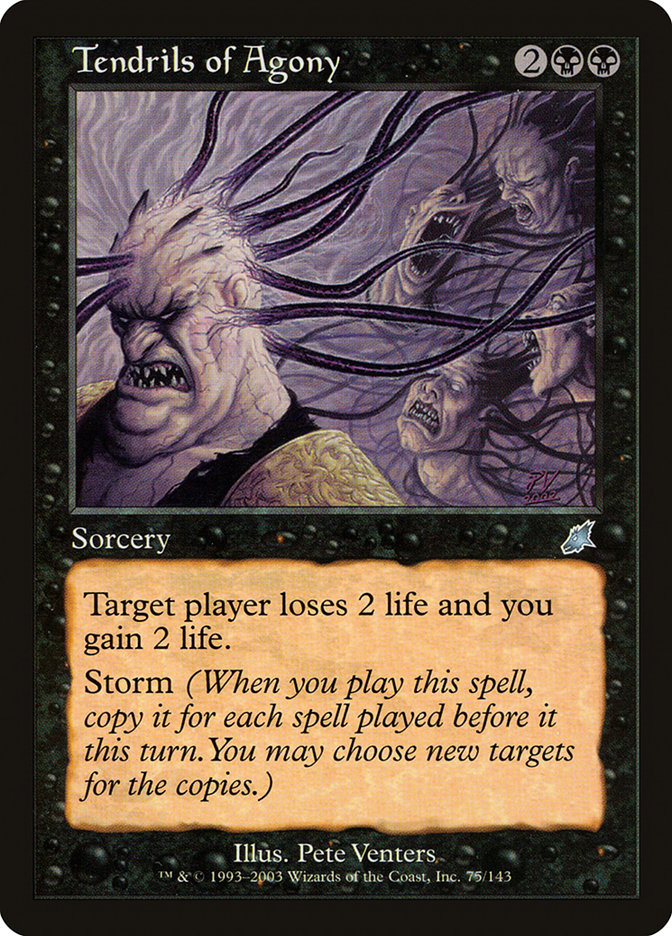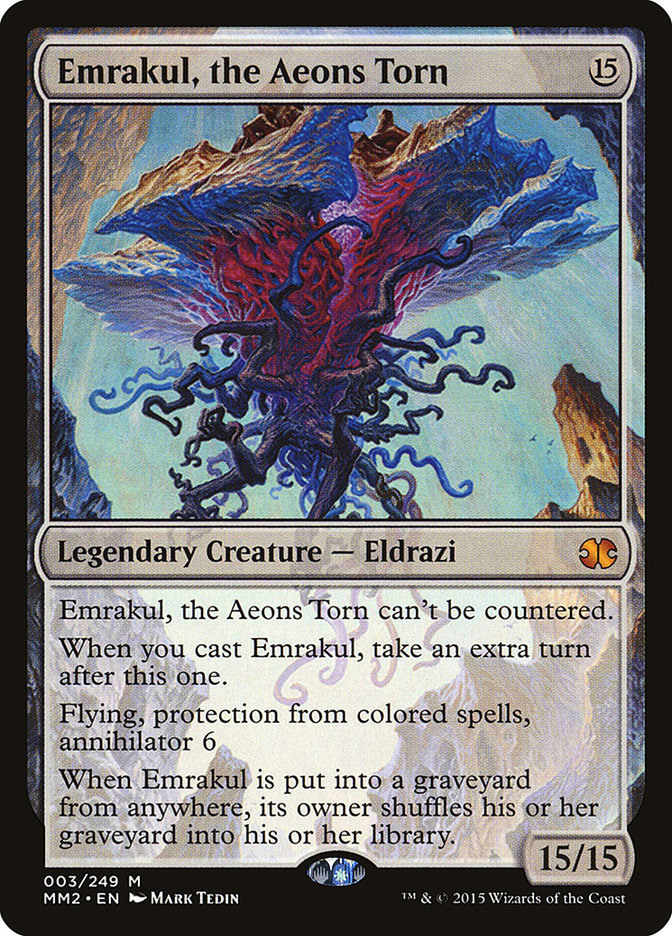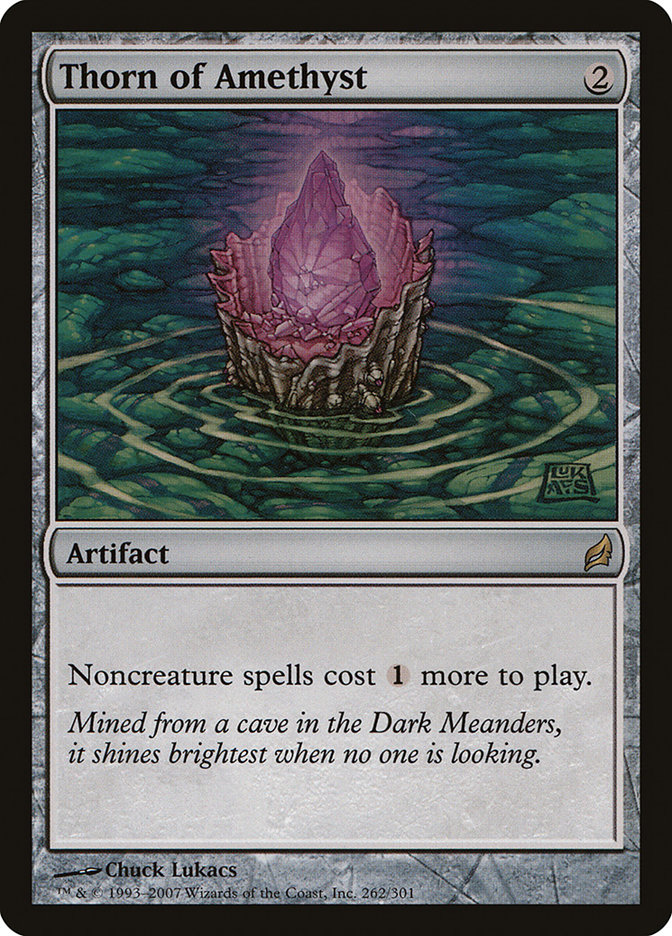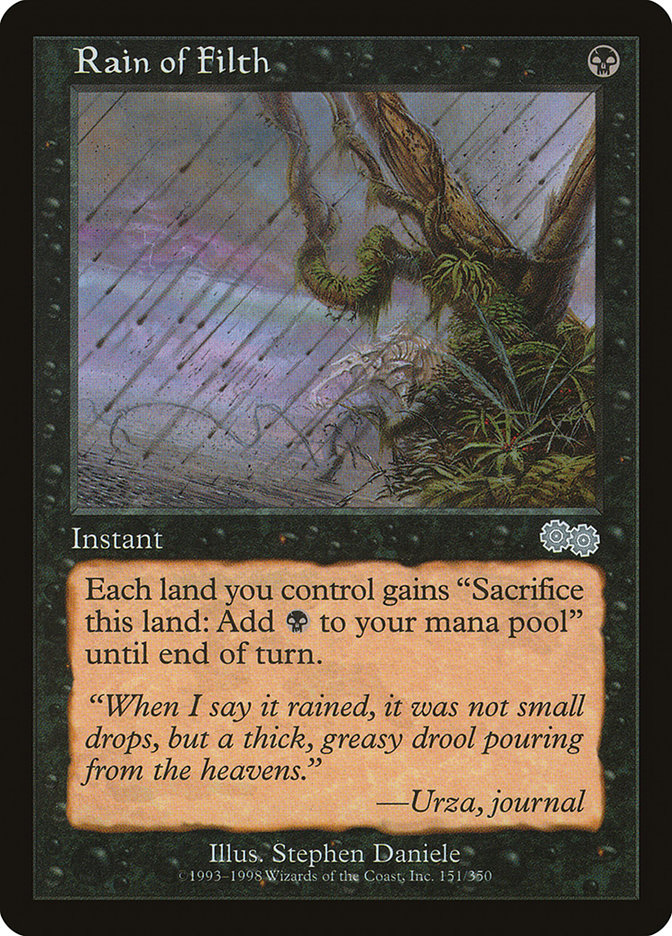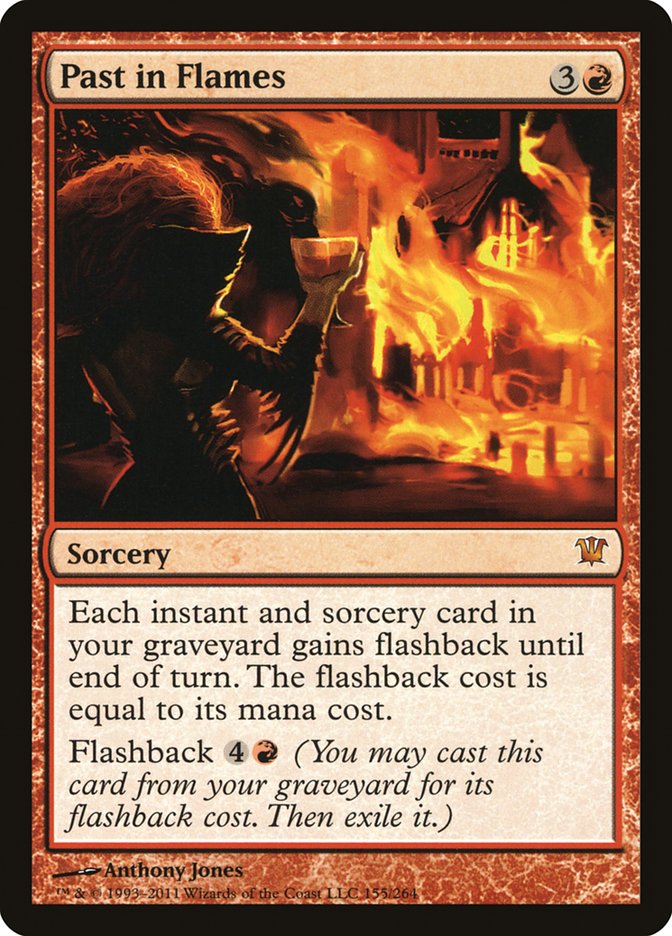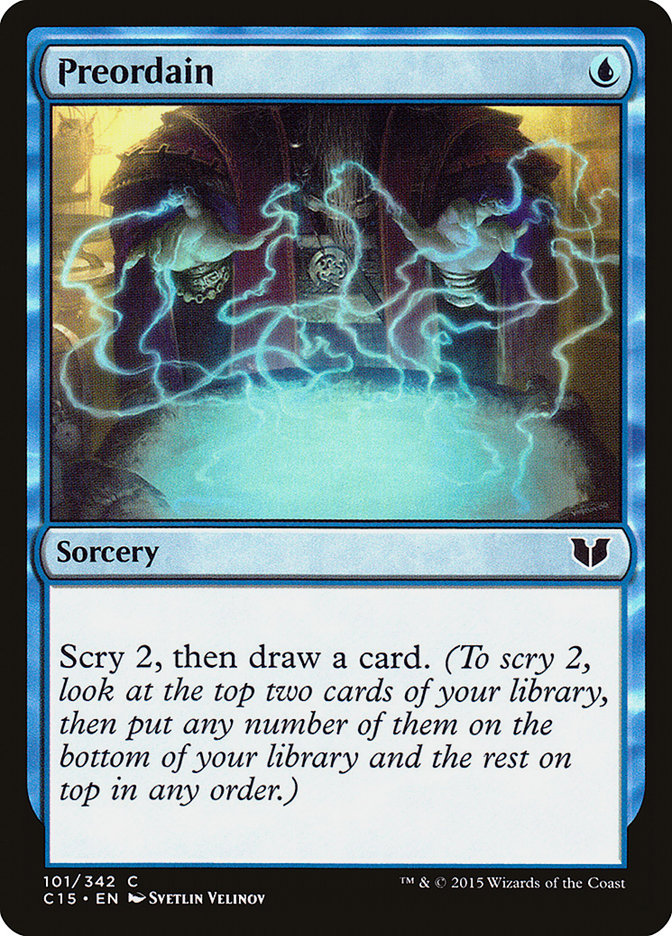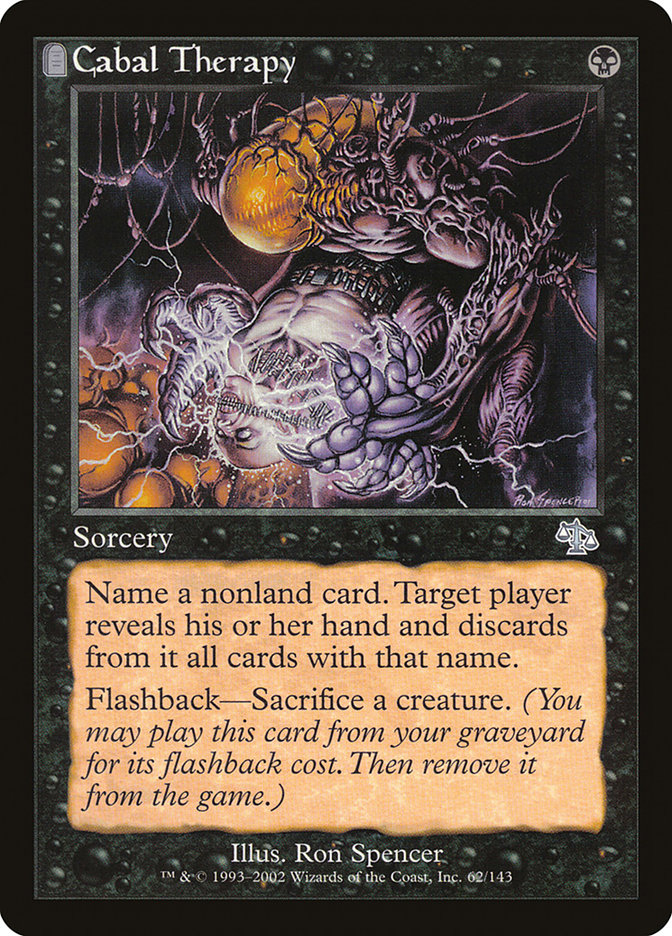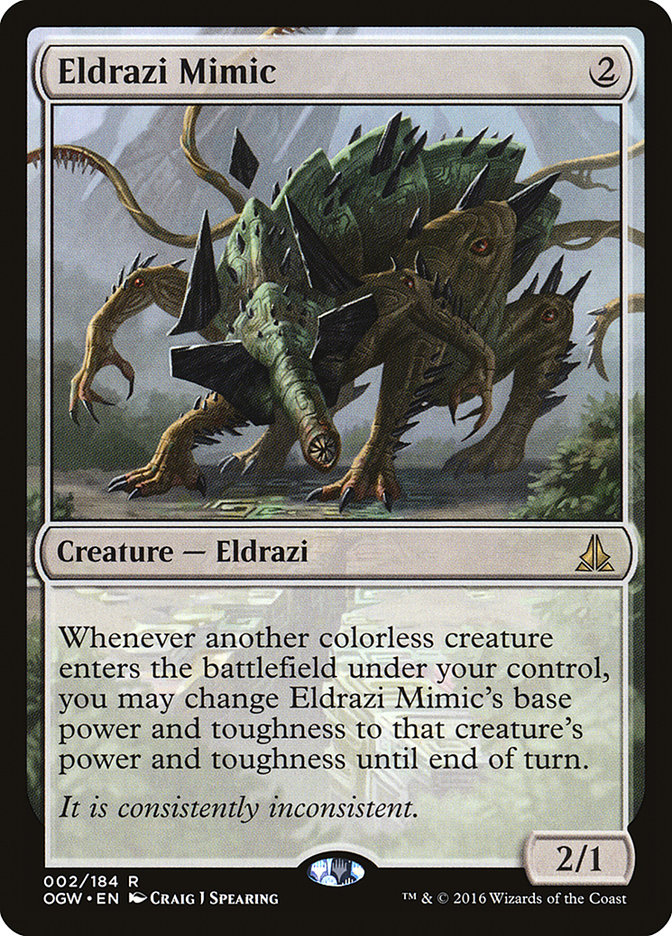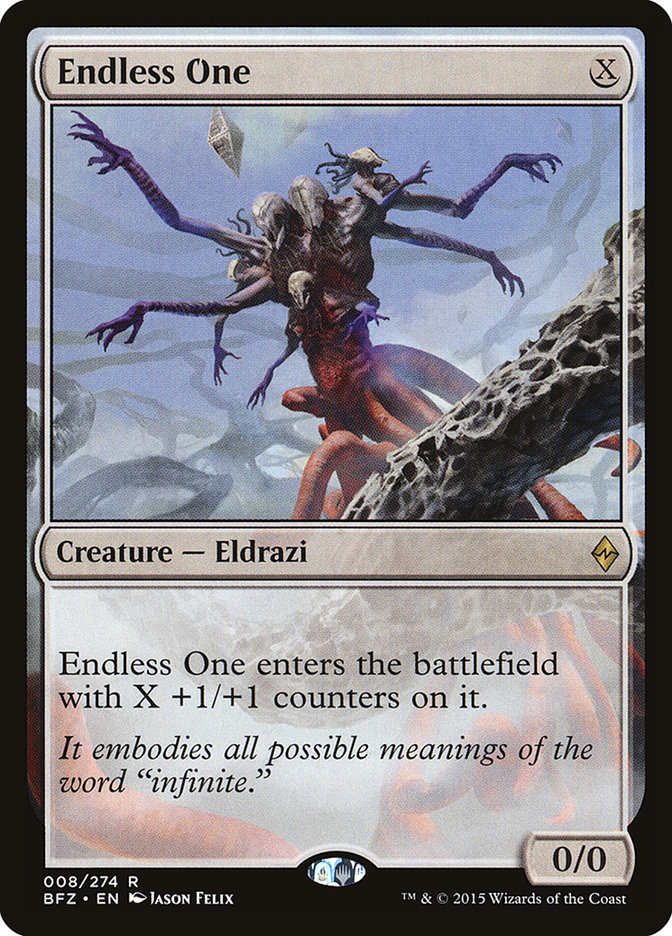When last Tendrils of Agony and I saw each other, I was takingfiveminutestoresolveaBrainstorm and still not resolving it correctly. In other news, Legacy is hard, sky is blue, and water is wet. Still, that Open in New Jersey was a successful tournament for me and Storm is still a powerful deck in the format, so I don’t have to cry myself to sleep at night while I search for a new deck to play. Step one complete.
The second step is to figure out where the deck can change. Being an intricate combo deck with many moving parts, Storm is rather inflexible when it comes to deckbuilding, which is both a blessing and a curse. On the one hand, it means we have a limited range of options for how to adjust based on the opposing deck, but on the other, having such a high number of cards contributing to your primary gameplan makes the deck more powerful. Fortunately, the cantrips in Storm make the deck quite resilient against disruption.
Theoretical Aside:
In my experience, there is undue anxiety around playing linear decks because no one wants to enter a tournament feeling like they cannot beat a certain deck. In reality, if a linear deck and a non-linear deck are of equal strength, then the weakness of the linear deck from being poor against certain matchups or certain hate cards is counteracted by the non-linear deck not having any great matchups and not having any completely overpowering synergies.
Moreover, while the non-linear deck looks appealing because you have more in-game decisions to make so you can leverage your play skill, you gain a significant advantage by having a well-built linear deck via a proper sideboard and a solid understanding of its matchups. Since linear decks are more like machines, ensuring that each cog is functioning properly is essential for maximum efficiency. Personally, I like making the most important decisions before the tournament begins, when I have more time to be thorough.
The tradeoff between these two competing aspects of a deck does not necessarily favor the linear or the non-linear; in different contexts, either could be better. The importance is in understanding these differences and allocating your resources appropriately when building and tuning a given deck.
With that being said, here is the core of Storm, the cards that are extremely unlikely to be cut:
4 Ponder
3 Duress
4 Lion’s Eye Diamond
1 Past In Flames
1 Island
1 Swamp
Sideboard:
As you can see, there is not a lot of room for innovation. There are only five open slots in the maindeck, and at least one of them will be filled by a fifteenth land, although you have several options between a second Island, Badlands, another fetchland, and maindecking the Tropical Island to gain an additional sideboard slot. The subtle differences in the manabase mostly come down to how afraid you are of Wasteland, especially when deciding whether or not to play the third basic land.
The more interesting decision is what to do with the last three maindeck slots. For this, we need to look at the current Legacy format to see what has changed.
The Alien Invasion
Needless to say, things are different now. Before the Eldrazi came, we had all that horrible freedom and spent our days pursuing our own selfish interests. Now we have seen the light and put all our efforts into honoring the glorious Eldrazi by building them magnificent monuments and commemorating their many incredible achievements. All glory to Emrakul!
On a more serious note, the rise of Eldrazi as a staple of Legacy is the most important change that has happened since I last played the format in December. Chalice-Aggro decks like Sea Stompy, Dragon Stompy, and Goblin Stompy (some creative deck naming at work there) have always lurked around the fringes of the format but lacked the consistency to be top decks. Moving to a fully colorless Eldrazi list solves this issue by giving the deck even more two-mana lands and a significantly more powerful threat base. It is also relevant that the Eldrazi creatures are great for applying pressure, since that is what you want to do with Chalice of the Void and Thorn of Amethyst, cards that stymie your opponent’s development but will allow them back into the game given enough time.
Unfortunately for Storm, Eldrazi is a very poor matchup on paper. Disruptive permanents like Chalice and Thorn are much more problematic than discard or counterspells because they disrupt your ability to cast cantrips to find what you need. In Game 1, you are simply hoping they do not have their disruption early enough or that you have a hand that matches up well against them. Even after sideboarding, being unable to dig for an Abrupt Decay puts more pressure on your opening hand to be strong at fighting through disruption or incredibly explosive.
The clock Eldrazi puts on you is similarly problematic, and an underrated aspect of fighting linear decks. It is easy to think that a hate card is unbeatable, but in a long game Storm is resilient enough to win through plenty of disruption. Forcing them to find answers to your hate cards and assemble a combo by turn 5 or 6, though is often insurmountable. That Thought-Knot Seer doubles as a clock and disruption is, in common Magic parlance, gross.
The good news is that, because Legacy is such a large format, you need not overreact to the presence of a bad matchup. In Standard, a deck of Eldrazi’s caliber may be fifteen percent or more of the metagame, whereas in Legacy it will not exceed ten. The prudent decision is to make some minor changes to help in the matchup without changing the deck so much as to forfeit equity against the rest of the field.
The most obvious tweak is to include the second Island, and possibly even a sixteenth land. Without the ability to play a long game consistently, the penalty for missing a land drop is severe, and having extra mana to combo through a Thorn of Amethyst is important. Playing a fourth Misty Rainforest complements the second Island nicely, even if we have to sacrifice a sideboard slot to Tropical Island for it. The unfortunately reality is that linear decks do not have great sideboards, so the one slot there is not as great of a cost as it would be in most decks.
The other way to combat Eldrazi is to lean toward a more explosive build of the deck. Force of Will and Thoughtseize are less robust disruption pieces than Chalice of the Void, but they become factors earlier and target whatever resource is most constrained. As a result, the best way to combat them is to play more cantrips and sculpt your hand over a longer game so that you are resilient to them. To combat Chalice of the Void and the like, you do the opposite and trim cantrips, instead looking to be more explosive and either end the game before those cards enter the battlefield or immediately remove the permanent and execute the combo.
To that end, I think Rain of Filth is a solid option for one of the remaining two maindeck slots, and I certainly was not surprised to see it in Sam Black’s Storm list at the Magic Online Championship.Rain of Filth is an additional Ritual in the early-game, often adding between two and three mana, which will allow the deck to combo more often on turns 2 and 3, but it does not sacrifice much in longer games. It plays very well against discard-heavy decks, because those games tend to go longer, allowing you to make more land drops but leaving you light on other mana cards. A single Rain of Filth can add four or more mana in those games, allowing you to essentially recoup a lost card in value, which is signficant.
It is also notable that, even when adding one or two mana in the early-game, Rain fills your graveyard so that your Cabal Rituals have threshold, which is often the difference between winning and losing. When you combo in the early turns, you often only have one or two Rituals to recast with Past in Flames, and they need to get you up to six mana to cast a tutor for Tendrils of Agony. Dark Ritual plus Cabal Ritual nets three mana without Threshold but five mana with, making getting to six mana quite easy.
The last slot will likely still be a Preordain, since I do not want to overreact and I have been happy with Preordain in the past, but these small changes to the maindeck make a significant difference since Storm has so much velocity. It is not uncommon to have access to thirty or more cards from your deck over the course of a game.
The fourth Cabal Therapy, which I have typically maindecked, is still a strong consideration, especially if I opt against playing sixteen lands. The seventh discard spell’s value is also affected by how many other combo decks I am expecting. Currently I am leaning toward the extra land, since a field of Miracles, Eldrazi, and Grixis Delver will likely scare some combo pilots, but the format can shift in the next two weeks, so I would advise staying open and keeping close watch on the metagame.
After looking at how the emergence of Eldrazi directly affects Storm, the next step, an often-ignored one, is to look at the secondary effects Eldrazi has on the metagame. As I noted above, the influx of Eldrazi could contribute to a decline in combo, which is something we should take into account when tuning a list. Any new deck is going to have natural predators and natural prey. If the deck becomes popular, the predators will also rise in prominence while the prey will decline.
Because it is powerful and proactive, there aren’t a lot of obvious predators for Eldrazi, but it still has strengths and weaknesses that I believe the Columbus metagame will react to. Eldrazi is going to be weak to decks that can maintain parity on the battlefield without being vulnerable to Chalice of the Void. When I think of those qualities, only one deck comes to mind: Shardless Sultai. The combination of Abrupt Decay, Tarmogoyf, and Baleful Strix is great against Eldrazi, and fortunately very poor against Storm. That Shardless Sultai is also historically good against Miracles, currently the most popular deck in the format, makes it a very appealing choice for Legacy players that like to Brainstorm and Force of Will their way to victory, so…pretty much all Legacy players.
Esper Deathblade can play a similar game to Shardless Sultai, even splashing green for Abrupt Decay, so preparing for those matchups will be important. Cutting a Preordain leaves us a little short on deck manipulation, which leads me to want a Sensei’s Divining Top, which shines against discard-heavy attrition decks like Esper and Sultai. In combination with fetchlands, you get to tear through your deck and over time sculpt an unbeatable hand. Top also lets you keep a key card on top of your library, where it cannot be targeted by a discard spell. Honestly, Top is a card I wish I had played in previous sideboards, but my desire to play the underwhelming Carpet of Flowers prevented me from doing so.
With all these thoughts in mind, here is my current Storm list:
Lands (14)
Spells (46)

For now I have opted for the sixteenth land in the maindeck, but with a Tropical Island in the sideboard it doesn’t feel necessary, so I will likely have the fourth Cabal Therapy in the main or the second Preordain. It mostly depends on how much combo vs. midrange I expect and how much I value an extra sideboard slot. The fourth Decay was an easy addition, since you need to have it early against Chalice of the Void and extra copies can buy you time by killing an Eldrazi Mimic or an Endless One.
If you found this article a bit pedantic, I agree with you. These are small decisions that will only generate small advantages. But at high-level tournaments, Magic is a game of small advantages compounded over many games, many rounds, and many tournaments, so it behooves us to take the time to figure these little things out. It is also important that you understand exactly why each card in a deck is there, and why a list may change by five cards over the course of six months. It is tempting to try to reinvent the wheel for every tournament, since the glory in coming with something innovative is high, but the most effective way to succeed is to be fundamentally sound, and this is what fundamentally sound Magic looks like.
It may be unexciting, but only until I’m holding the trophy.


